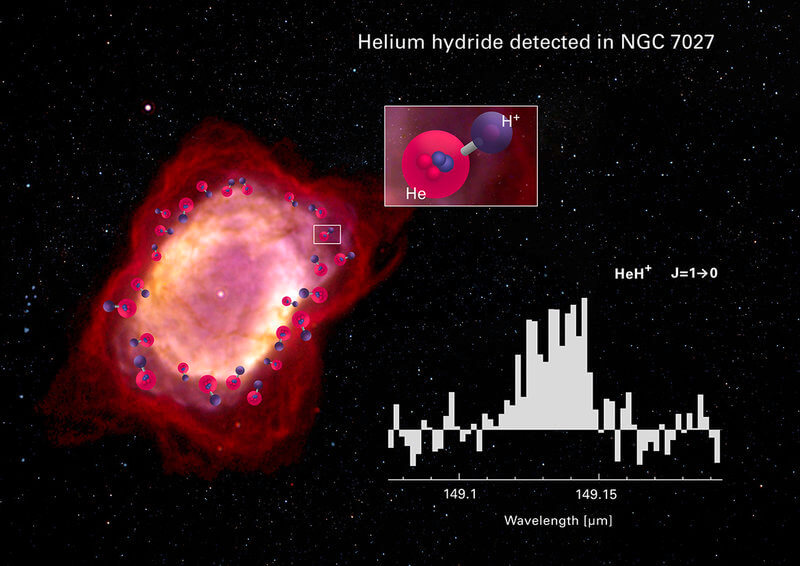Using the SOFIA stratospheric observatory, astronomers were able to detect a helium hydride ion (HeH+) in the planetary nebula NGC 7027, the first that was formed nearly 14 billion years ago after the temperature of the Universe exploded by the Big Bang dropped to about 4000 degrees.
The helium hydride ion, created from a helium atom and a proton, was the first type of molecular bond that formed in the early stages of the Universe. Over time, it was destroyed with the formation of hydrogen molecules and helium atoms. Although its existence was first demonstrated in the laboratory in 1925, it never met in space.
The discovery of HeH+ is a dramatic and beautiful demonstration of nature’s tendency to form molecules. Despite the unpromising ingredients that were available in the early Universe, a fragile molecule could form under severe conditions at high temperatures in a mixture of hydrogen and an inert noble gas of helium. Its discovery crowned with success the long search and confirmed that our understanding of the fundamental construction and destruction is correct.
-David Neufeld, co-author of the study from Johns Hopkins University (USA)
Previous attempts to detect the helium hydride ion did not end in success due to the limited resolution of existing spectrometers at appropriate wavelengths. The molecule emits its strongest spectral line at a characteristic wavelength of 0.149 millimeter, but, unfortunately, the Earth’s atmosphere is opaque to it and ground-based instruments are powerless in this search, which requires the use of space or stratospheric observatories, such as the SOFIA, which has a GREAT high-resolution spectrometer It has the ability to detect infrared lines emitted by the helium hydride ion.
In the late 1970s, astrochemical models suggested the possibility that helium hydride ions in detectable quantities may exist in planetary nebulae created by sun-like stars at the last stage of their life.
The hard radiation emitted by a white dwarf, glowing remnant of a star with a temperature of more than 100,000 degrees can lead to the formation of a helium hydride ion in the surrounding shell.
NGC 7027 has become an excellent candidate for search. This is a young planetary nebula aged 600 years, located at a distance of 3 thousand light years from Earth in the direction of the constellation Cygnus. The envelope surrounding the remnant of the deceased star, which contains about 3 solar masses, is still rather compact and dense.
The white dwarf in the heart of NGC 7027 is one of the hottest among all known, with a temperature of about 190 thousand degrees, and very bright, 10 thousand times brighter than the Sun, and the intense ultraviolet radiation emitted by it and the bombarding shell leads to the formation of an ion in it helium hydride, which was detected in the observational data of the nebula by a spectrometer aboard SOFIA, conducted in May 2016.
The first molecules of the universe discovered
Click To Tweet
The post The first molecules of the universe discovered appeared first on Upcosmos.com.
